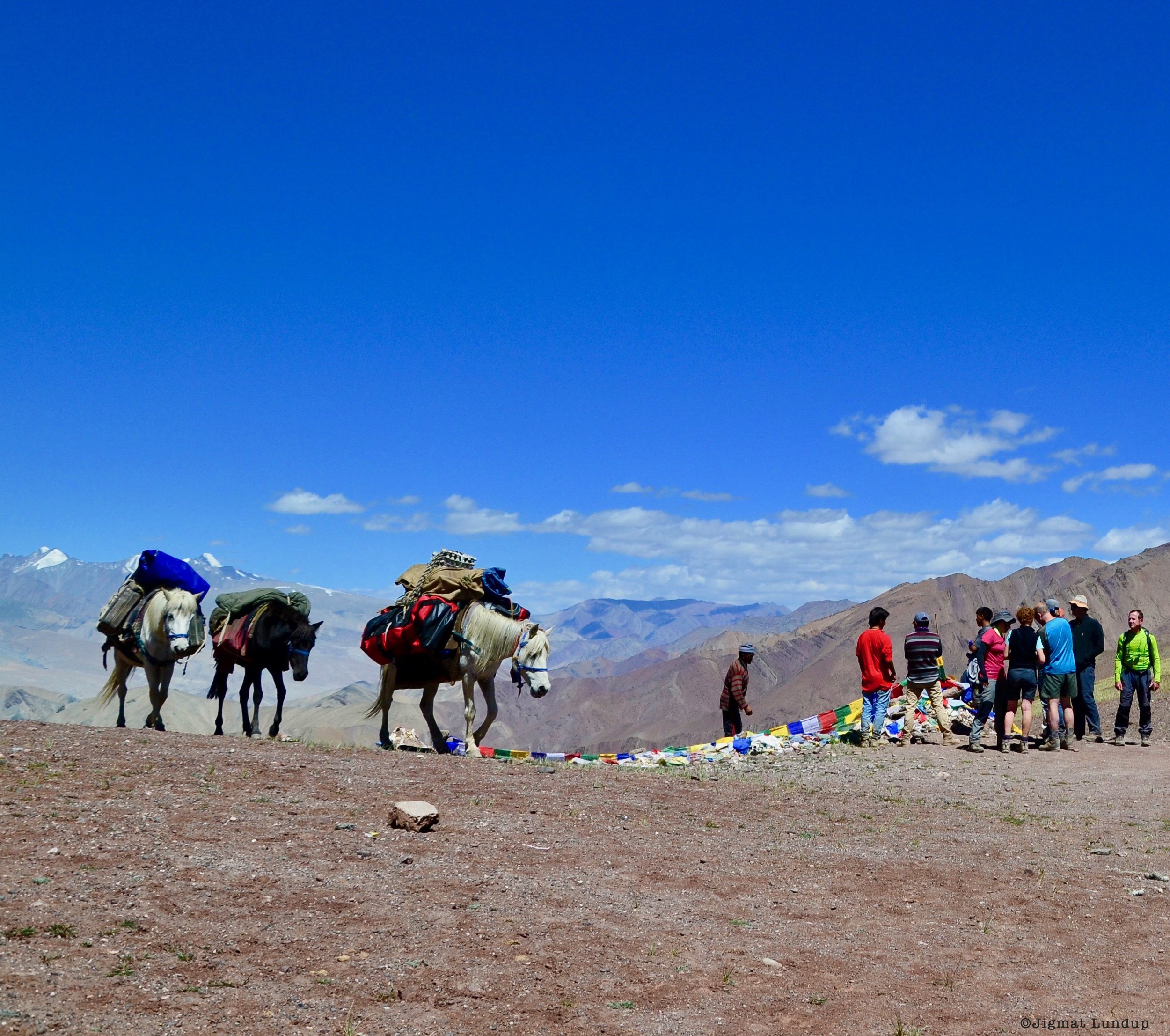
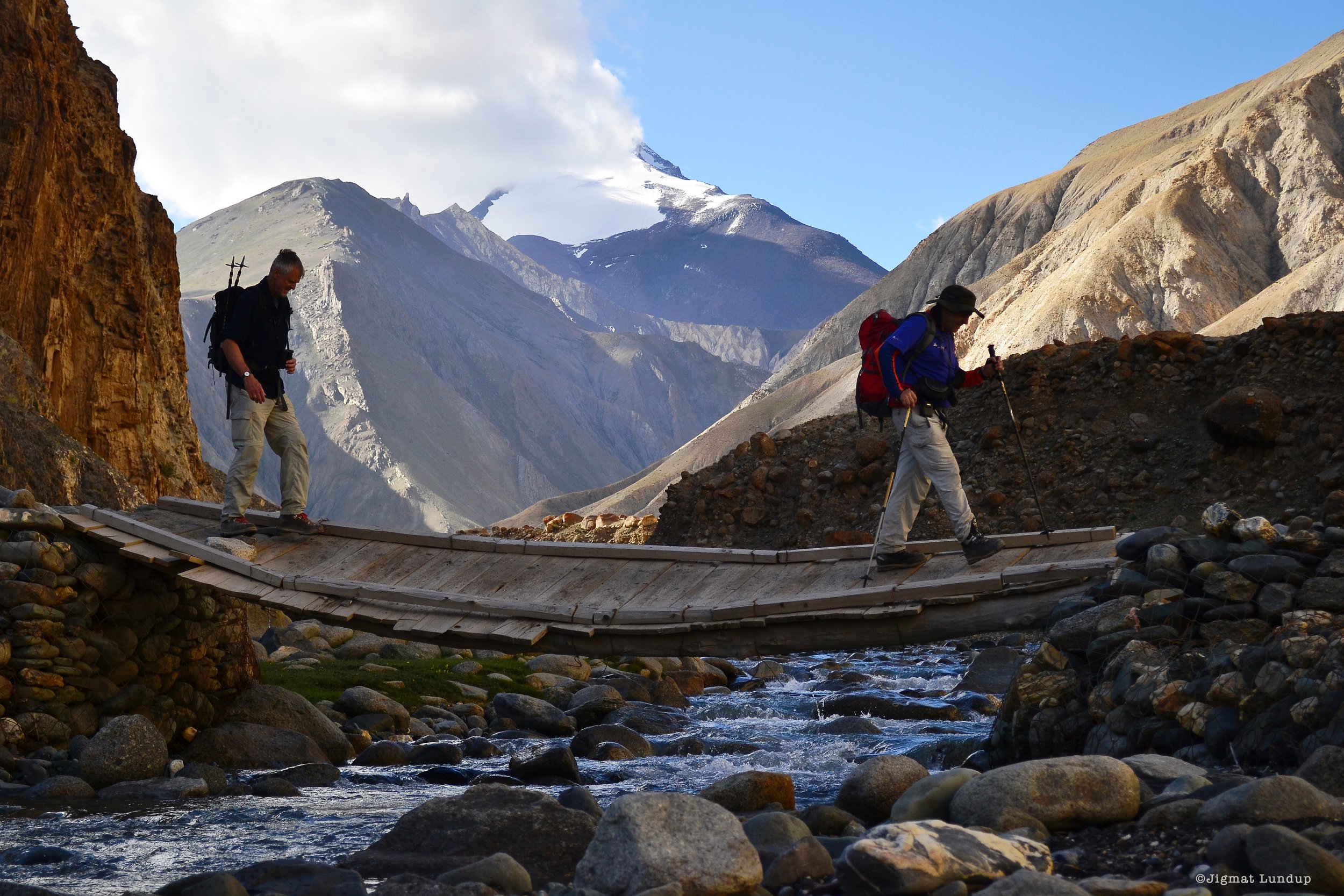
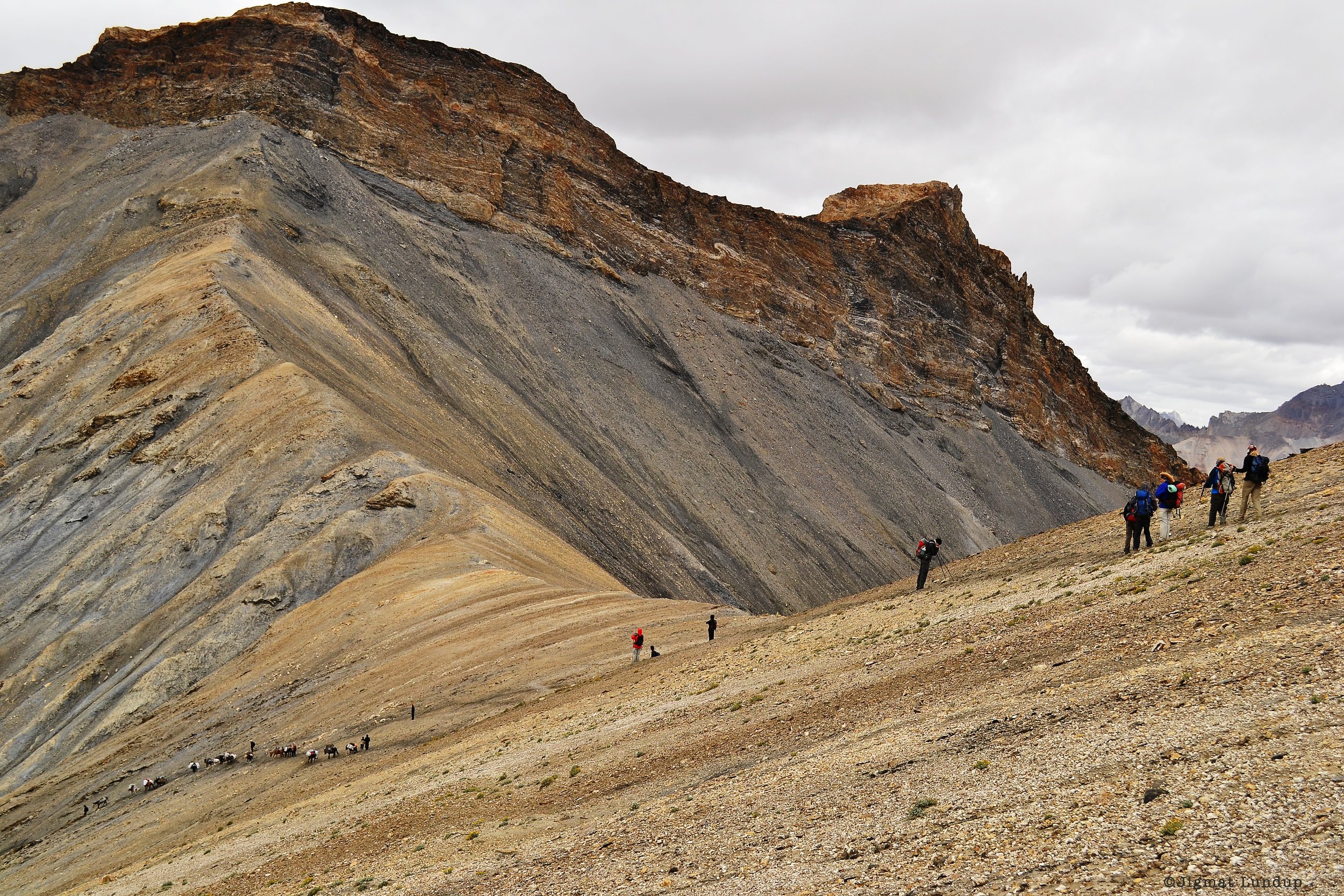
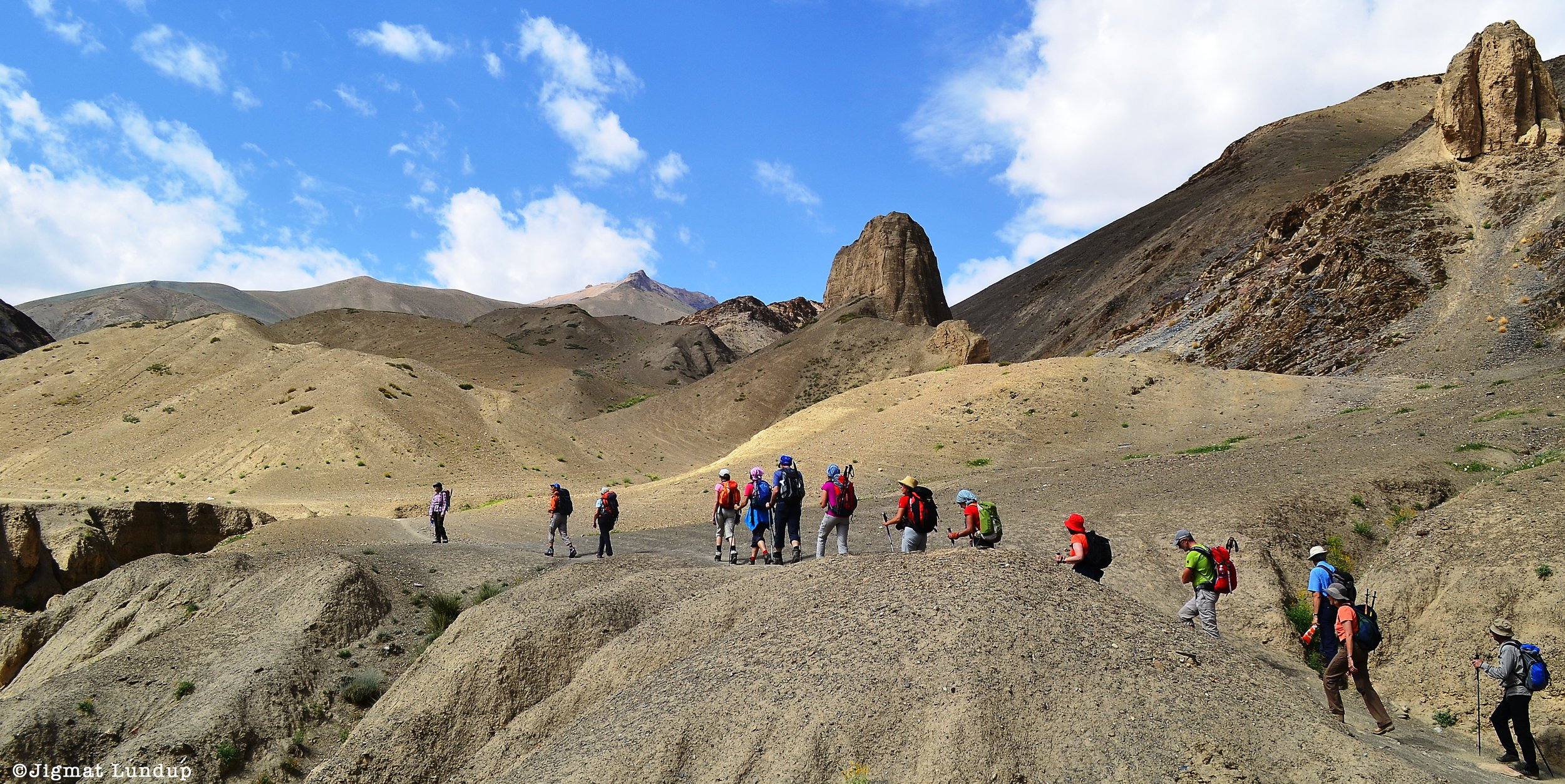








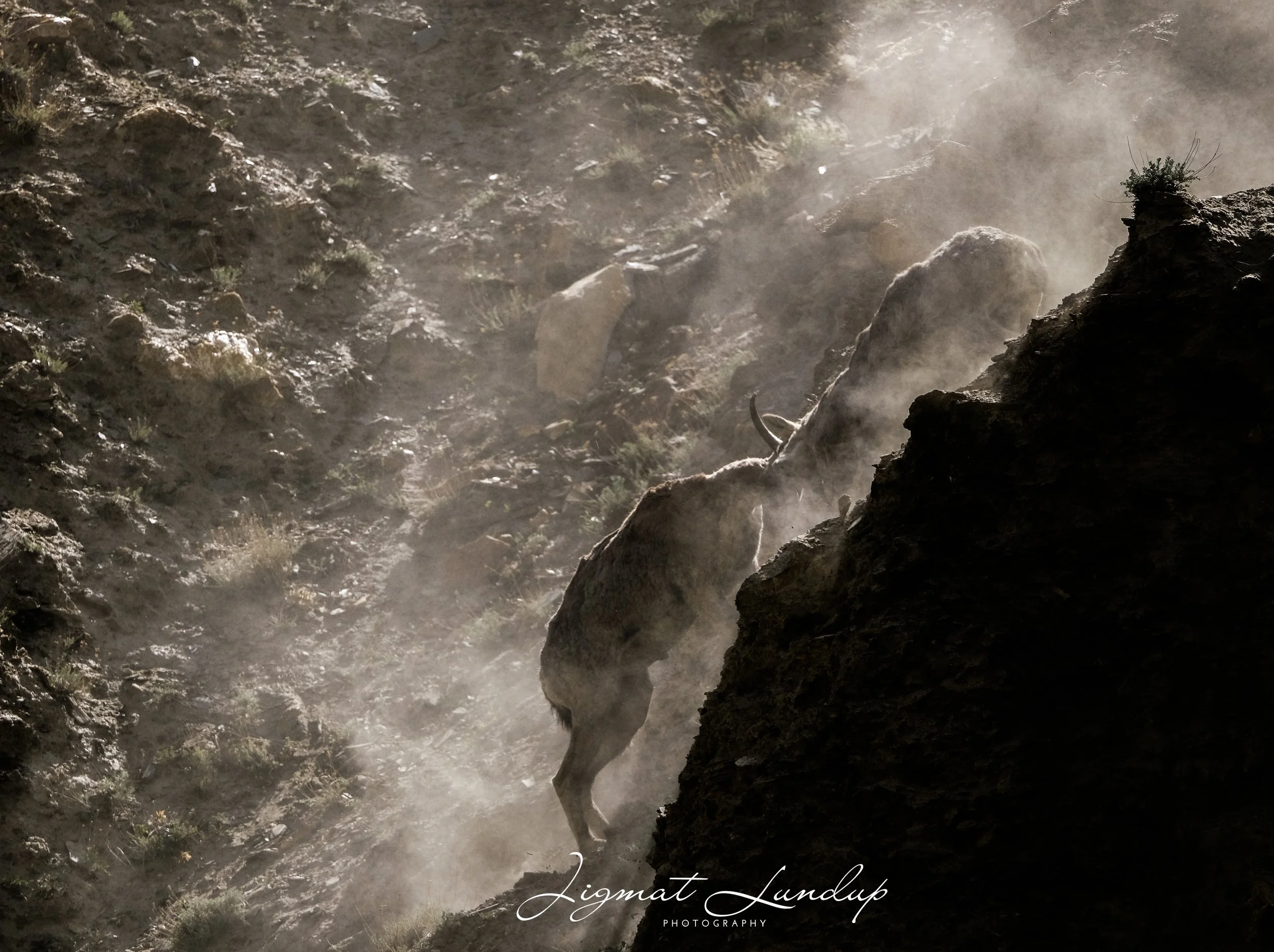
Trekking in Ladakh and Zanskar
Ladakh, an Himalayan marvel, welcomed outsiders in 1974 and swiftly earned acclaim as a trekking haven. Mainly attracting adventurers, Ladakh seamlessly intertwines its breathtaking landscapes with a rich cultural tapestry influenced by Tibetan Buddhism. The region's rugged terrain, reminiscent of Tibet, beckons trekking enthusiasts to conquer challenging trails, offering not just physical exhilaration but also a deeper connection with Ladakh's unique cultural essence.
Beyond the thrill of summiting peaks, Ladakh unfolds a cultural odyssey—traditional festivals, ancient monasteries perched dramatically on cliffs, and the warm hospitality of the Ladakhi people. This transformative journey fosters camaraderie among fellow trekkers, coupled with homestay experiences, creating lasting connections. Ladakh stands as a holistic destination, where the adventure of trekking converges with cultural discovery, leaving an indelible mark on those seeking an immersive and enriching Himalayan experience.
Contact us to customize your dream trekking adventure in Ladakh!
Zhalungkarpo Trek
7-day trek
The “Zhalungkarpo Trek” is one of the most mesmerising treks in Ladakh. You will start your journey in one of the last villages of the picturesque Markha Valley and proceed towards Changthang, which is part of the Tibetan Plateau. On the way, you will cross the Zhalungkarpo mountain pass (about 5,150 meters), which offers an impressive view of the Kharnak Valley and the Zanskar Range. This trek serves as an excellent alternative to the Markha Trek, which has experienced changes due to the construction of a new road, affecting its previously untamed beauty. When it is sunny and hot outside, you can also refresh yourself in the rivers along the way.
Day 1
Drive from Leh to Markha, which is a 4-hour drive. We start our trek to Umlung, our first stop for the day. Along the way we will have our packed lunches by the Markha river. For those interested, we can also stopped at the Tetsa Monastery, which is perched in the rocky mountains before Umlung. Level of difficulty for the day: easy.
Day 2
After breakfast, we walk for about 4-5 hours to our next camping place, Chumik Gyaltsa, which is situated at an altitude of 4,267 meters. That day, we will be able to see the sole fortress of the Markha Valley, the Palace of Hangkar. It is said that historically, the Palace of Hangkar served as a residence for local rulers and a center for religious and administrative activities. From Hangkar, we leave the Markha Valley and head east towards the Zhalungkarpo Pass. Level of difficulty for the day: easy to moderate.
Day 3
Post breakfast, we walk for about 5-6 hours to our next camping place, Yakrupal, which is situated at an altitude of about 4,600 meters. We walk along the stream water coming from the Zhalungkarpo Pass, surrounded by green meadows, wildflowers, wildlife, and singing birds. You may have the chance to see wolves and blue sheep. As we reachcamp in the afternoon, you will have the chance to relax and enjoy the nature that surrounds you. Level of difficulty for the day: easy to moderate.
Day 4
On the fourth day, we ascend the Zhalungkarpo Pass. After breakfast, we walk for about 2 hours through a dry landscape dotted with wildflowers, cross small streams, and then start our ascent. The pass is a tri-junction that leads to Zanskar, Markha, and Kharnak,offering an amazing view of some of the most traveled traditional routes of Ladakh. As we descend and proceed towards Kharnak, the surrounding landscape gradually transforms into the steppe vegetation of the Tibetan Plateau, characterized by low-lying shrubs and a variety of wildflowers that thrive in the arid conditions. The change in vegetation highlights the unique ecological transition from the high mountain pass to the expansive plateau. After a walk of 5-6 hours, we will reach our camping site, Tsogra, at about 4,200 meters. Level of difficulty for the day: moderate to difficult.
Day 5
Our fifth day is dedicated to exploration and rejuvenation. We will trek for about an hour to the abandoned village of Kharnak and set up camp. The rest of the day will be spent exploring the area, where you can see abandoned shelters of the nomads, the ruins of the impressive Kharnak Fort (also known as the Black Fort, made of black stone), and traces of agricultural land. This day involves minimal walking to allow us to regenerate for the rest of our expedition.
Day 6
After breakfast, we walk for about 6-7 hours to our next camping place, Dat, situated at an altitude of about 4,300 meters. Starting our trek from Kharnak, we traverse an impressive lush landscape, marshy meadows, and a forest of willow trees. As we near Dat, we will arrive at the altar of a local deity, an important ritual site in Kharnak where offerings are made by passing nomads. After walking for about another hour, we will arrive at Dat, one of the main nomadic settlements of the Kharnak Valley. Here, you can see permanent houses where nomads from the entire Kharnak region gather during Losar, the Ladakhi New Year. If time permits, we will visit the monastery of Dat, which belongs to the Drukpa lineage and is the only monastery in the Kharnak Valley. The level of difficulty for the day is moderate.
Day 7
On our last day, we will visit the monastery of Dat if we haven’t had the opportunity to do so the day before. After breakfast, we will break camp and depart for the drive back to Leh. Our journey will offer the opportunity to see wildlife and nomads as we drive through the Tibetan Plateau. We will traverse two mountain passes, the Yarla Pass and the Tanglangla Pass. We will arrive in Leh in the afternoon.
The Zhalungkarpo Trek is a captivating journey through Ladakh’s picturesque Markha Valley and the Tibetan Plateau, culminating in the stunning Zhalungkarpo Pass. Over seven days, you’ll traverse diverse landscapes, from lush meadows and marshlands to arid high passes and steppe vegetation, encountering wildlife and exploring cultural sites. This trek offers an authentic, untamed experience and leaves you with unforgettable memories of Ladakh’s majestic beauty and rich heritage.
